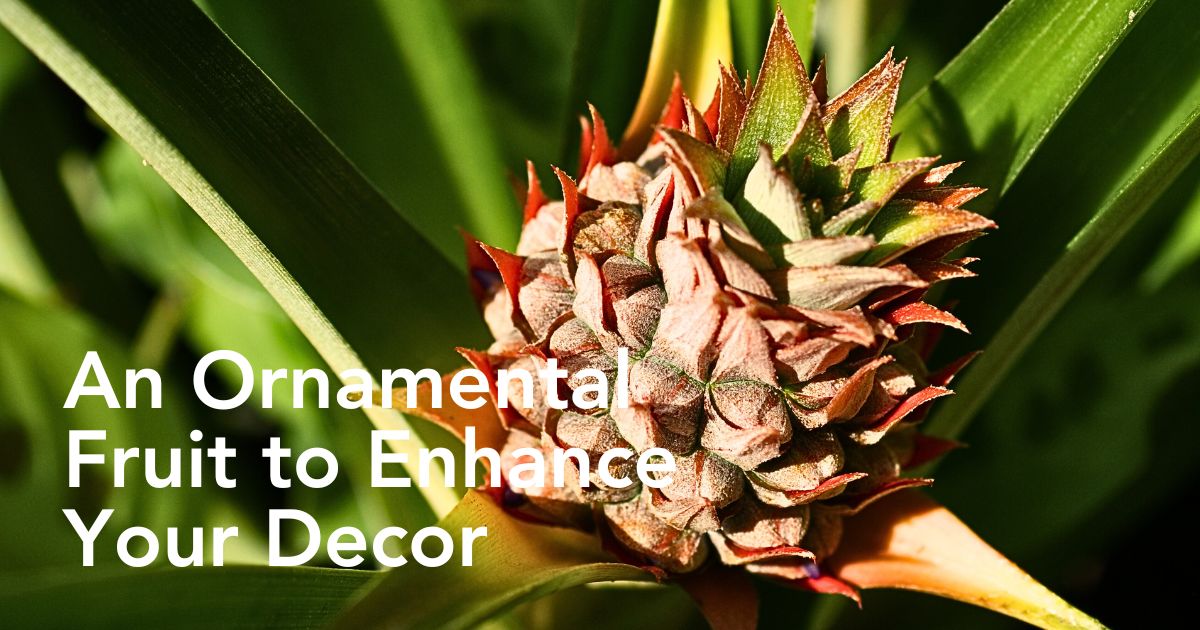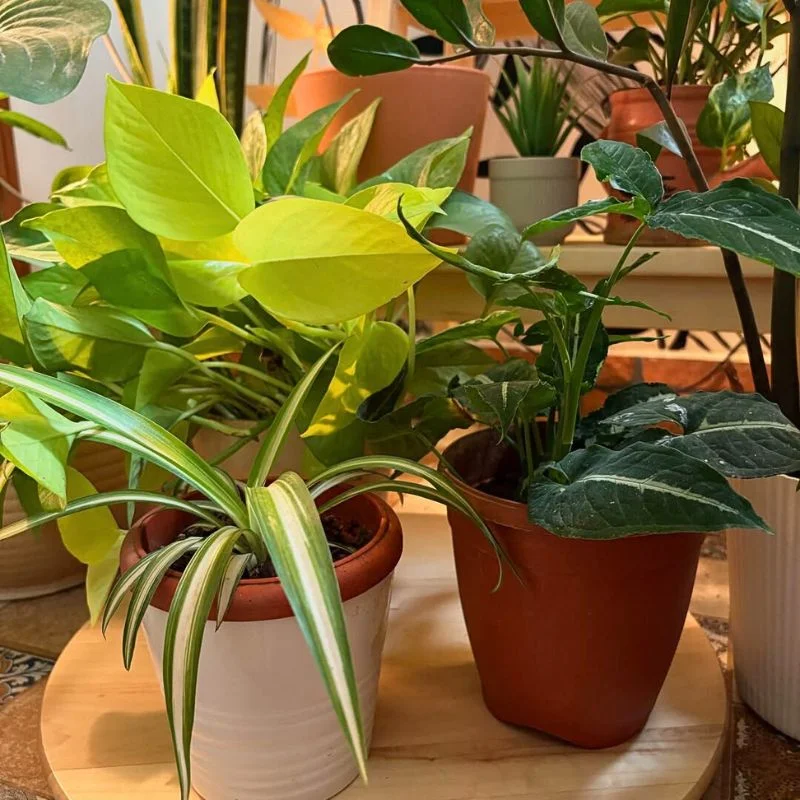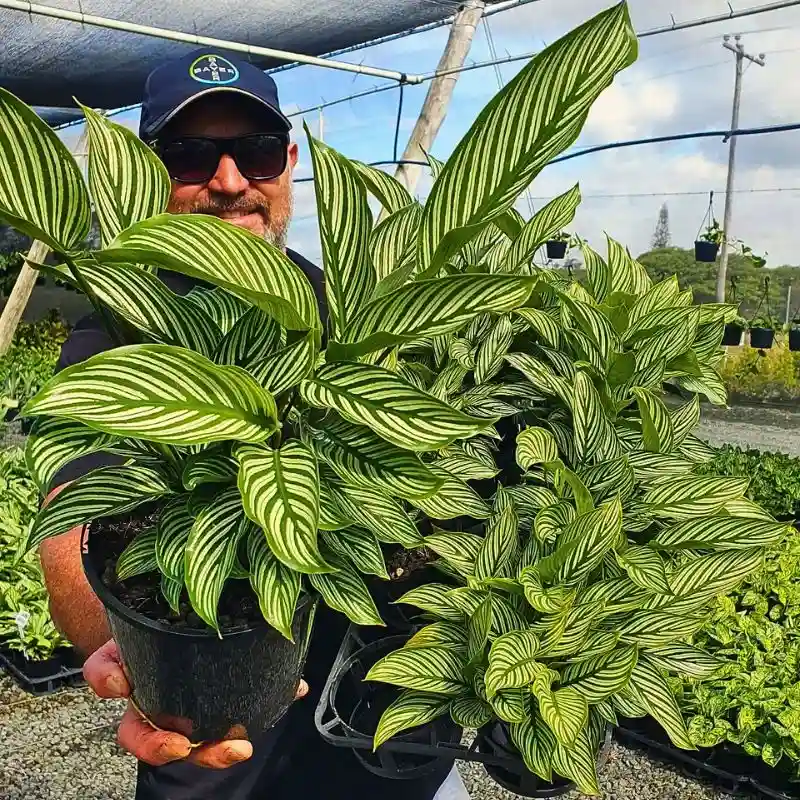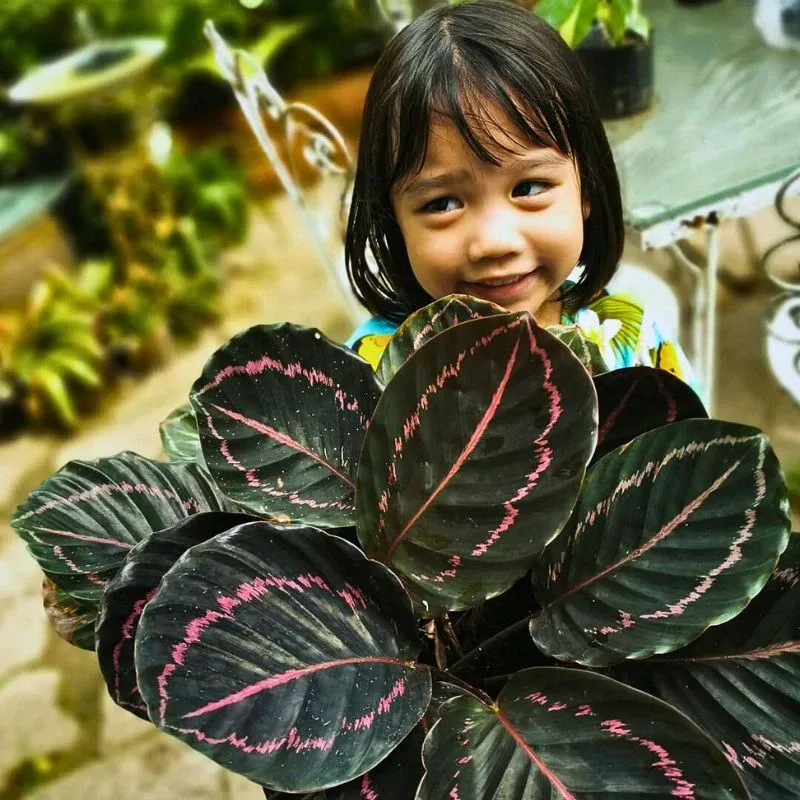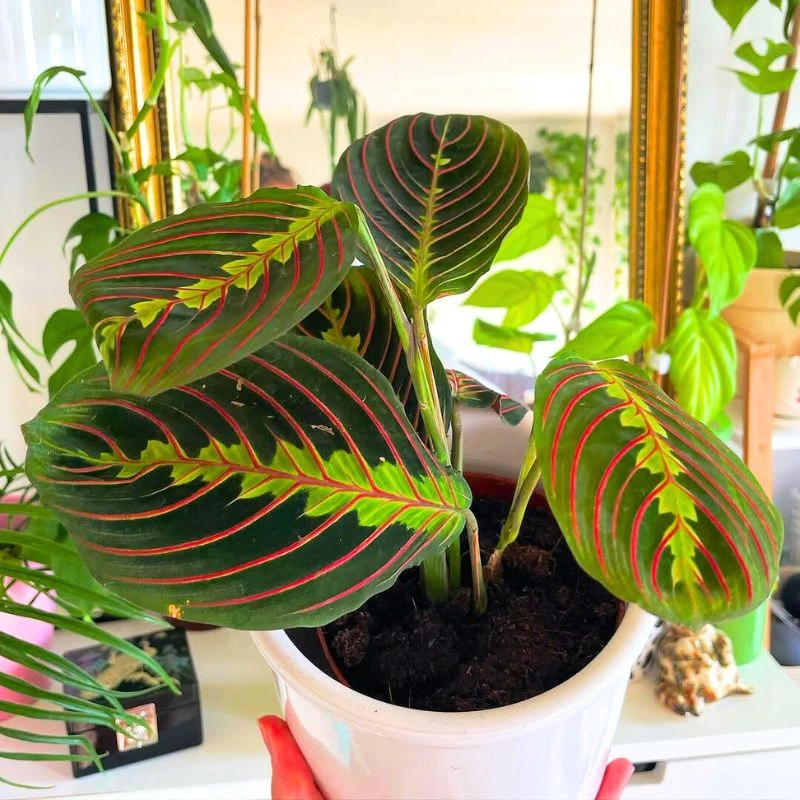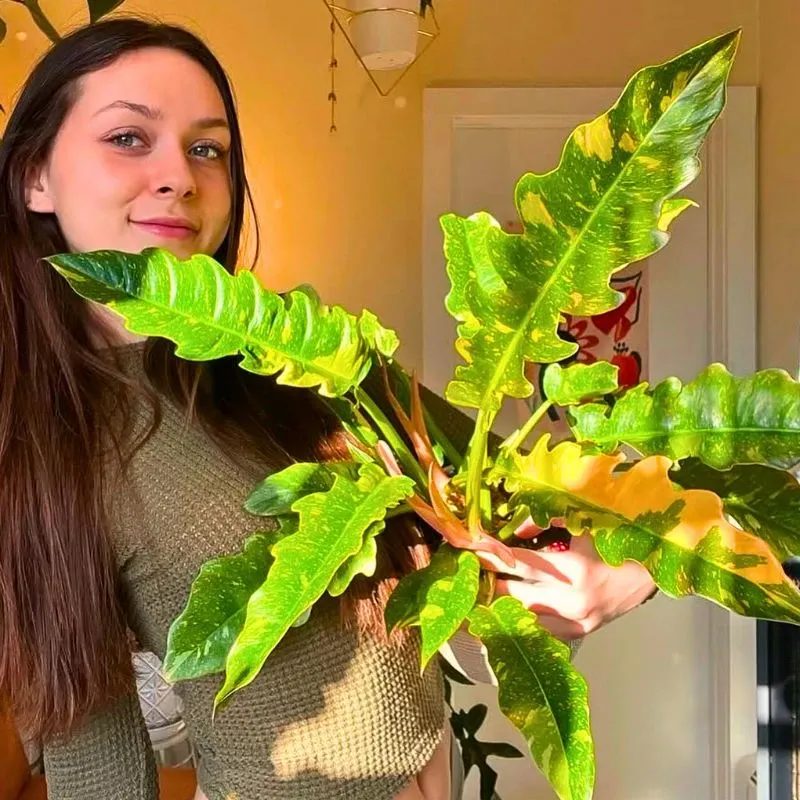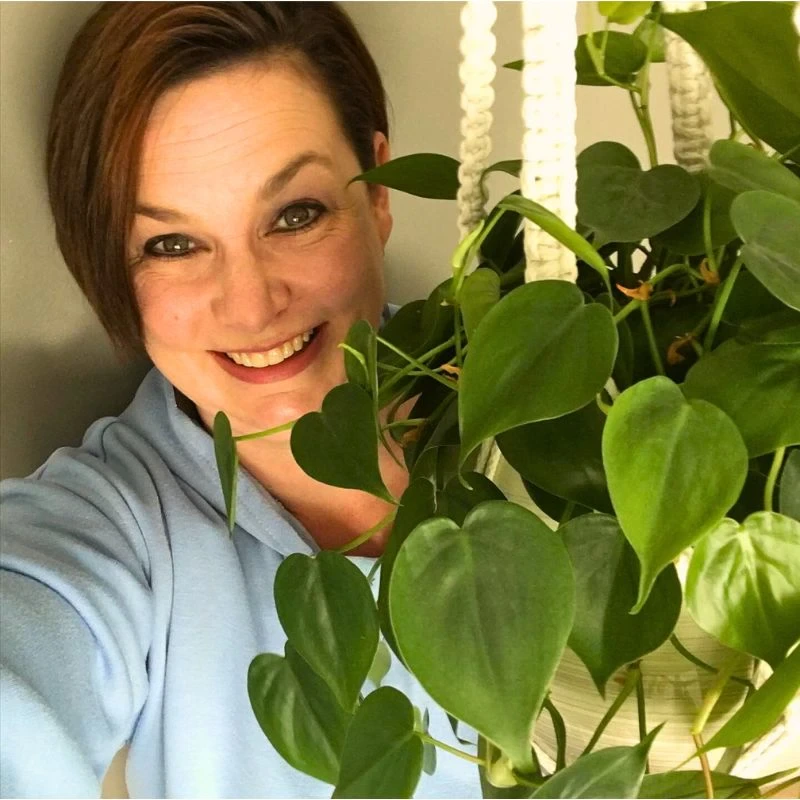The Pineapple plant is the most well-known plant in the Bromeliad family and by far, perhaps, the most popular Bromeliad at the moment. The primeval version grows and produces blooms high in the rugged Cordilleras de los Andes mountains and deep in the warm jungles of Uruguay, where the plant can grow to a diameter of up to two meters. The pineapple plant has a very high level of ornamental value, and how could it not?
The Pineapple Plant AKA Ananas Comosus
The pineapple plant from Bromelia Specialist is the only Bromeliad to carry a fantastic tropical fruit on its stem. The plant smells wonderfully sweet as the fruit ripens. Although the mini pineapple looks very appetizing, it is not suitable for consumption. It is an ornamental fruit.
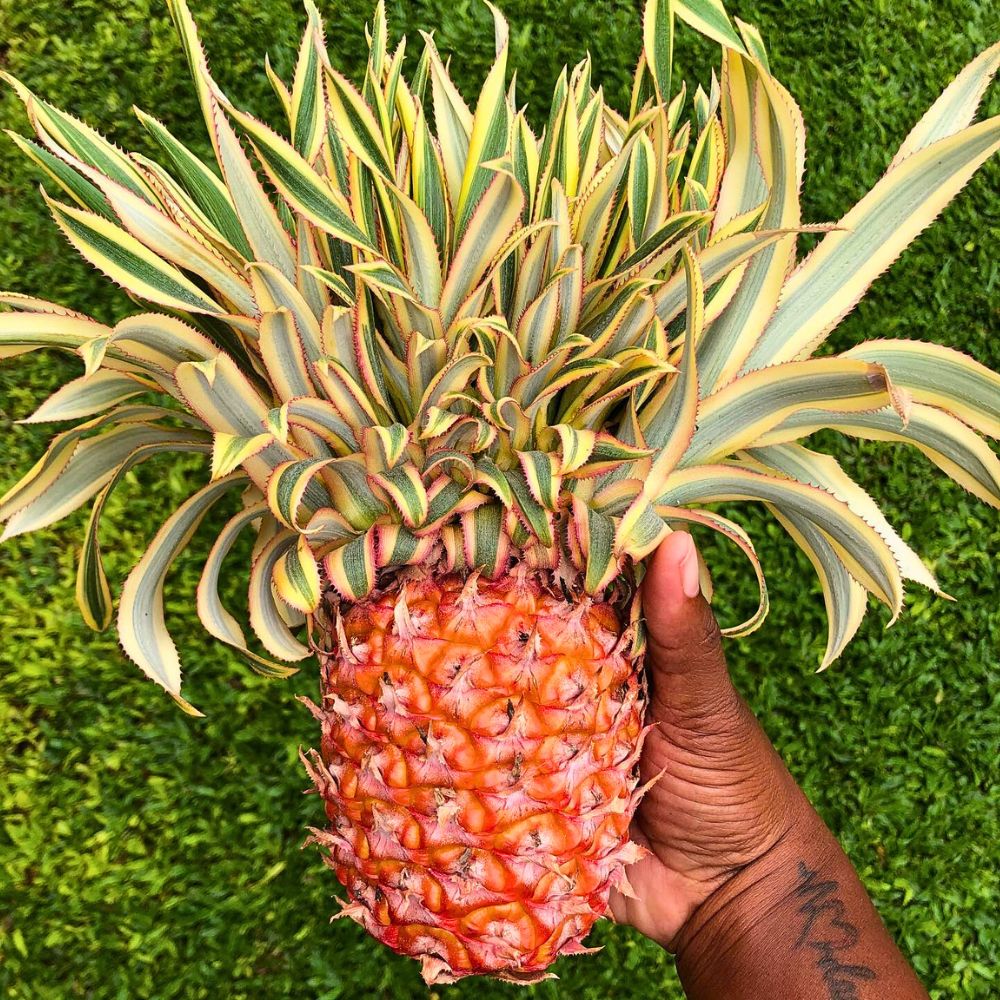
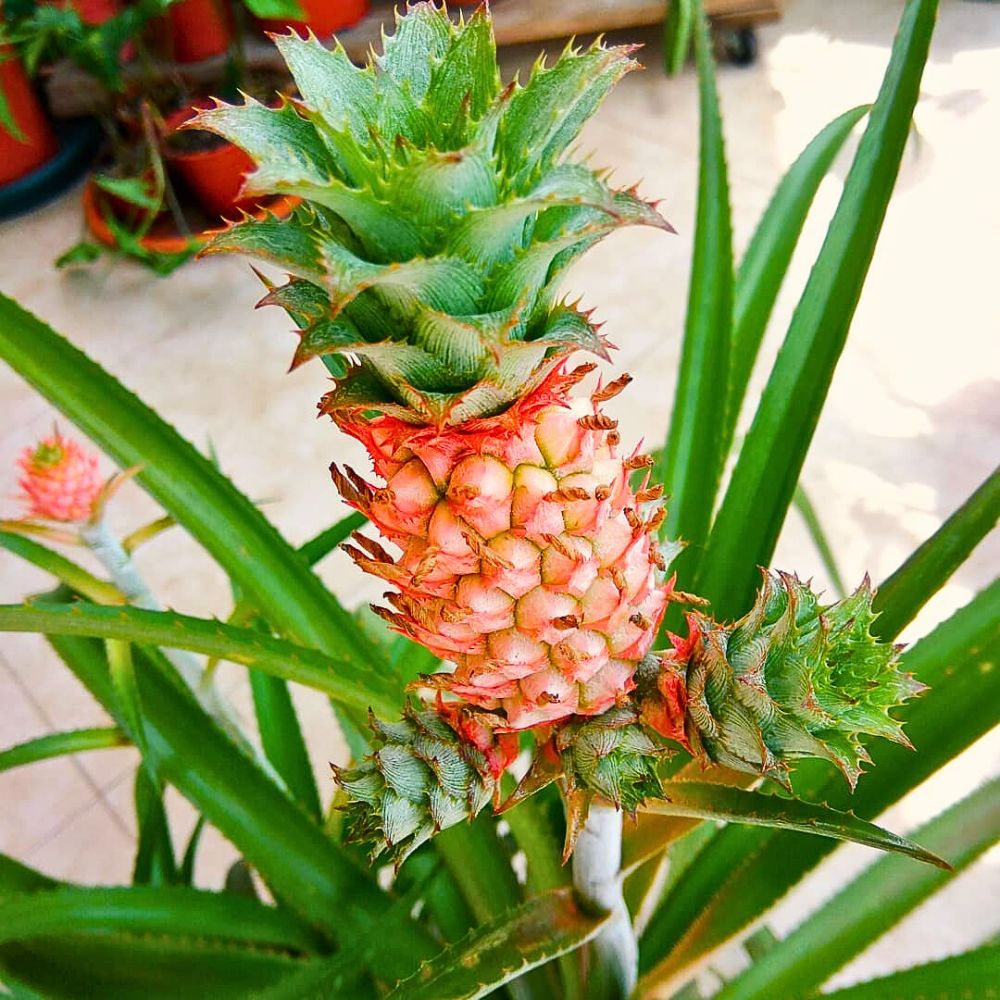
This herbaceous perennial has long sword-like leaves growing in a spiral around a central stem. Each pineapple plant will produce one flower stalk and, consequently, one pineapple fruit. The pineapple-shaped inflorescence portion of the plant arises from the end of the stem and blooms for about two weeks. It is a stunning display of spiked red and brown points from the center of the plant.
Cultivated for Many Centuries
The pineapple is indigenous to South America, where it has been cultivated for many centuries. The introduction of the pineapple to Europe in the 17th century made it a significant cultural icon of luxury. Since the 1820s, pineapple has been commercially grown in greenhouses and many tropical plantations and is still a popular houseplant to this day. Did you know International Pineapple Day is celebrated on June 27th every year?
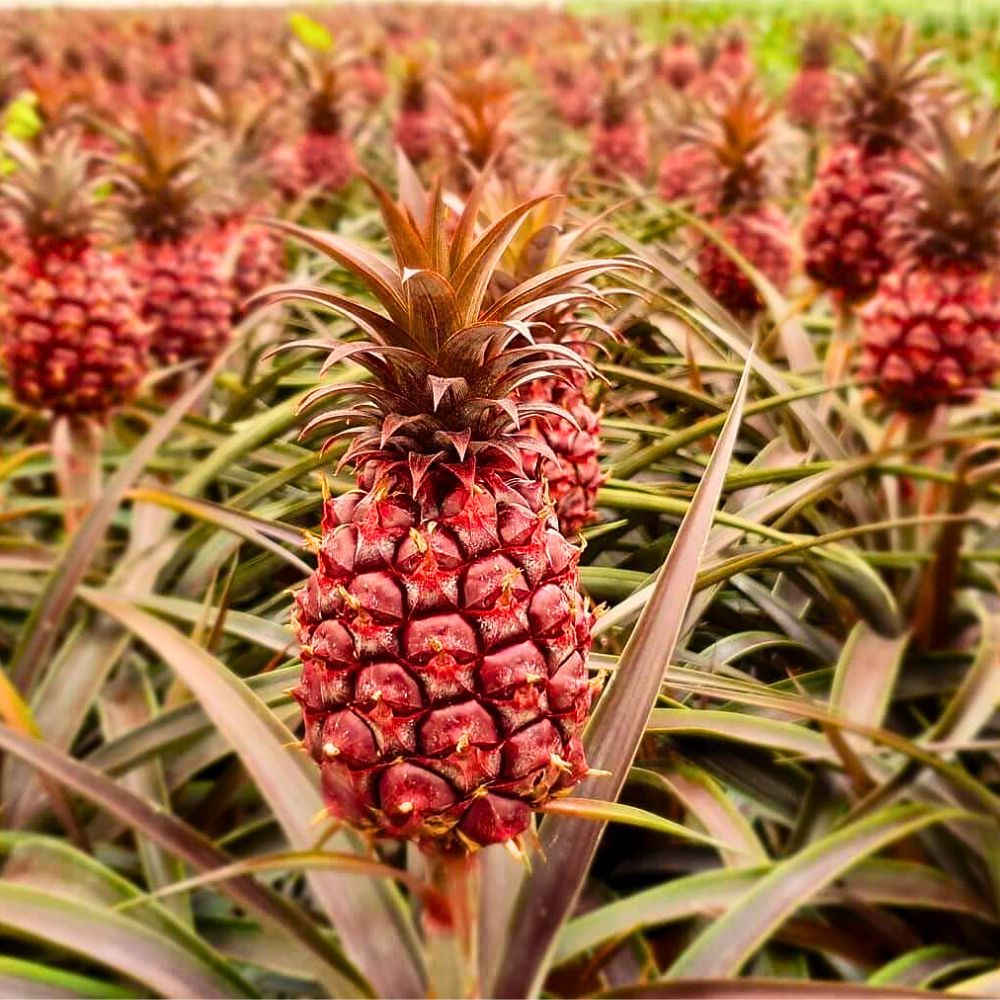
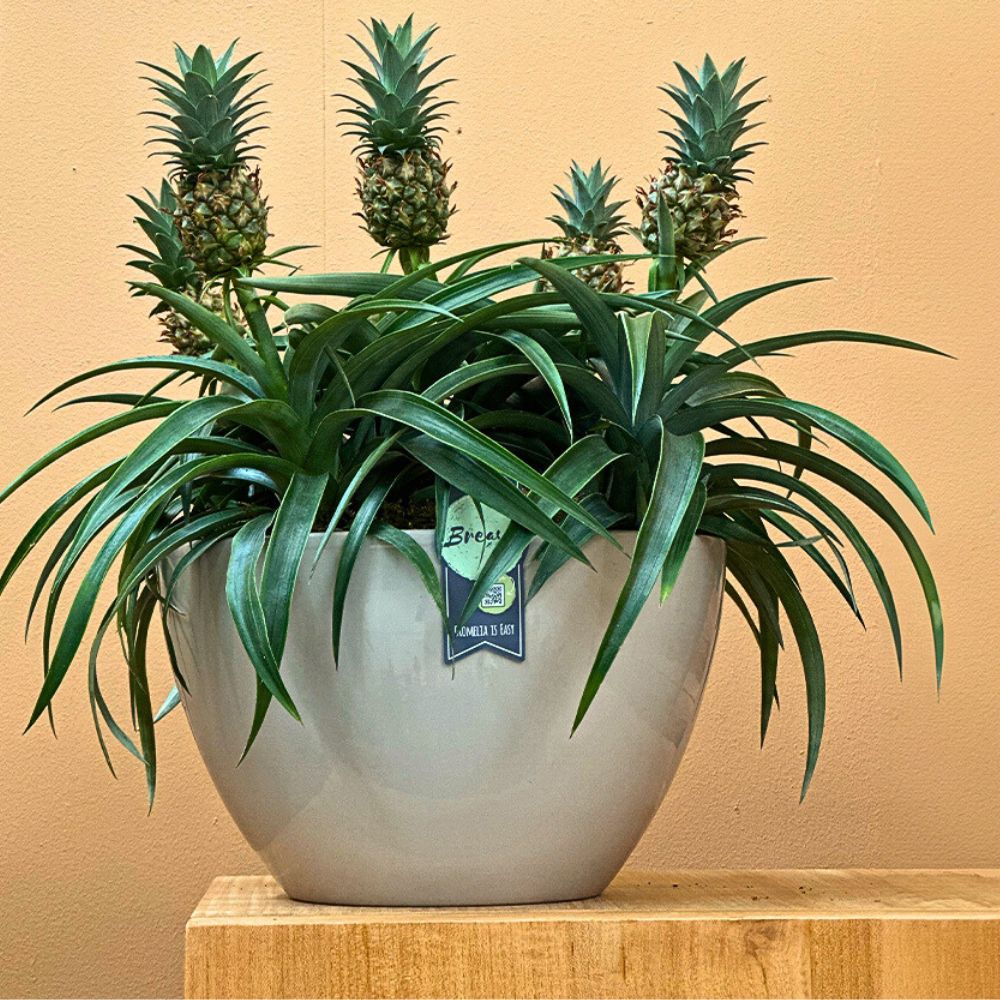
Native to the Americas, these fruits are part of the bromeliad family. There are around three dozen varieties of pineapples, but you'll usually find less than a handful in the produce section. Although these plants tend to be choosy about conditions, they can be grown indoors as long as they get plenty of sunlight, heat, and quality soil.
Incorporating the Pineapple Plant Into Your Interior Decor
Incorporating the pineapple plant into your interior decor can add a touch of tropical elegance and freshness to your home. This versatile plant not only serves as a decorative element but also offers the potential to produce fresh pineapples, making it a functional addition to your space.
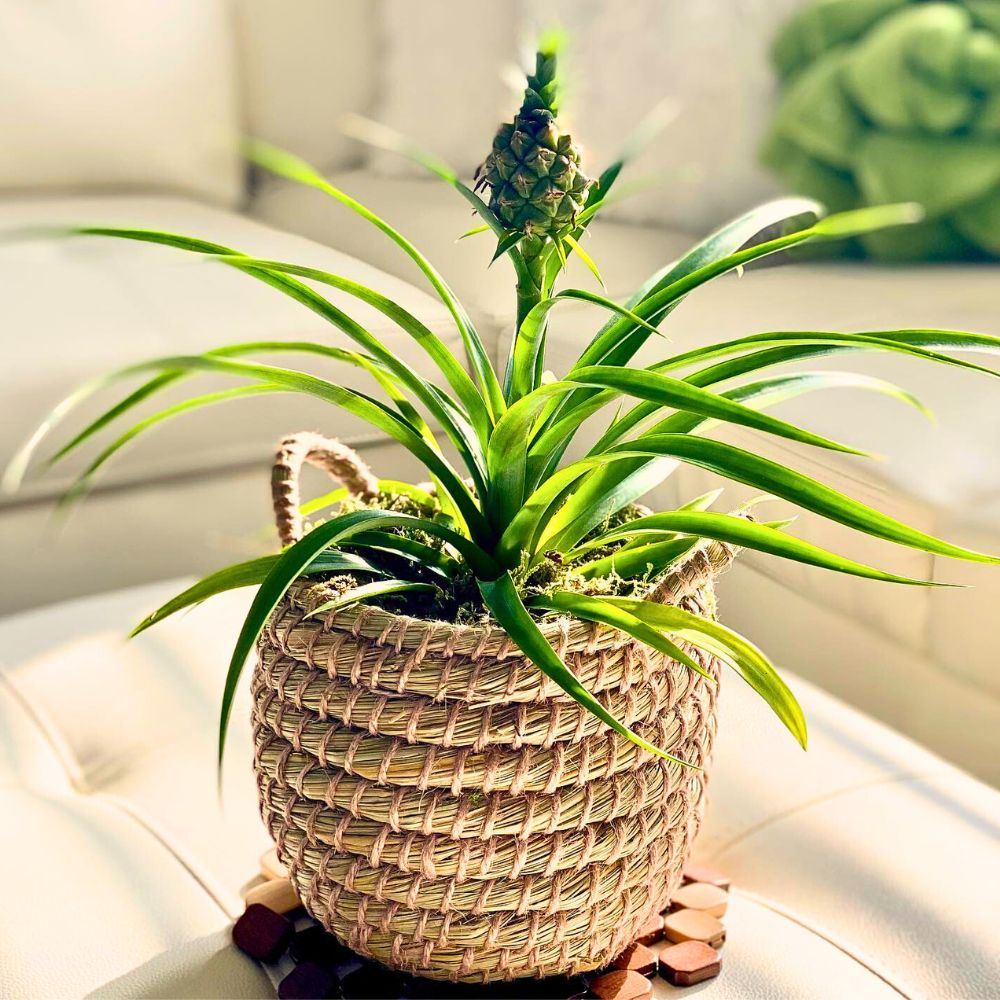
Choosing the Right Location
To successfully integrate a pineapple plant into your decor, select a location with bright, indirect light. While pineapple plants can tolerate some direct sunlight, too much can scorch the leaves. A south-facing window or a spot near a skylight is ideal. Ensure the area is well-ventilated to prevent fungal diseases.
Potting and Display
Opt for a stylish pot that complements your home's aesthetic. A ceramic or terracotta pot with drainage holes is recommended to prevent waterlogging. Consider using a planter with a unique design or color to make the plant a focal point in the room. You can place the pot on a side table, a desk, or a shelf, or even hang it from the ceiling for a more modern look.
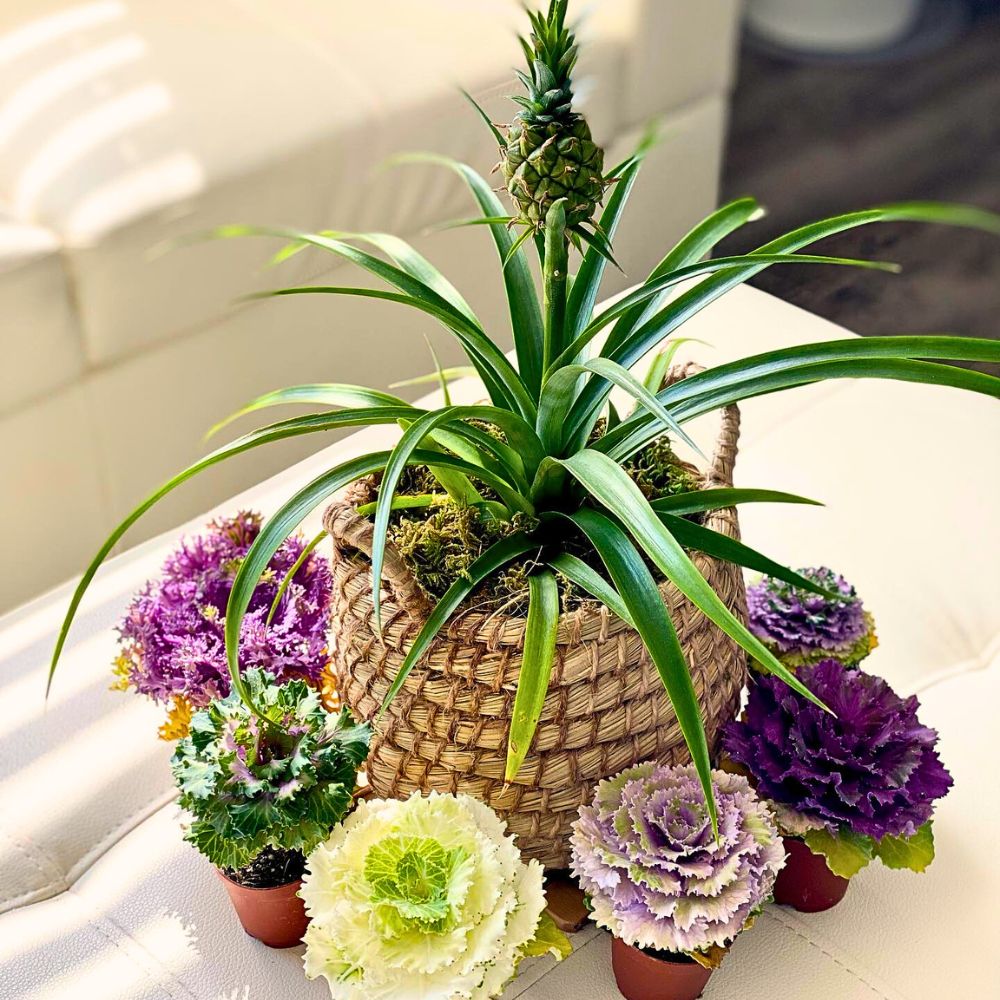
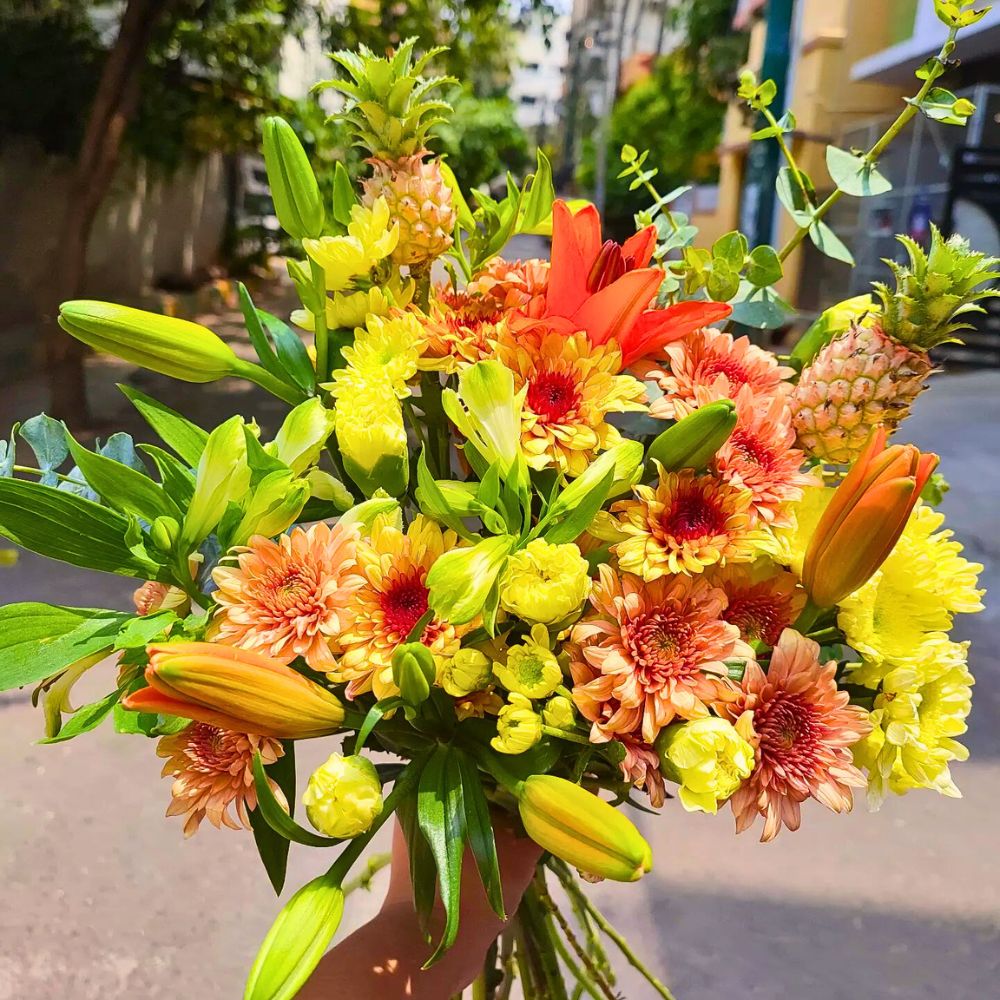
Styling Tips
To enhance the tropical vibe, you could pair the pineapple plant with other lush greenery like ferns or peace lilies. Add decorative elements such as shells or pebbles around the base of the plant for a beachy feel. Consider grouping the pineapple plant with other houseplants to create a lush, jungle-like atmosphere. By incorporating a pineapple plant into your interior decor, you can bring a touch of the tropics into your home while enjoying the potential of harvesting fresh pineapples.
How to Take Care of Your Pineapple Plant
Place your Pineapple in a well-lit spot in the house, but not in direct sunlight. This plant is watered in the central calyx, which is the heart of the plant from which the flower grows. From this central cup, the plant will feed itself. When water is no longer visible in the central base of the leaves the plant should be watered again.
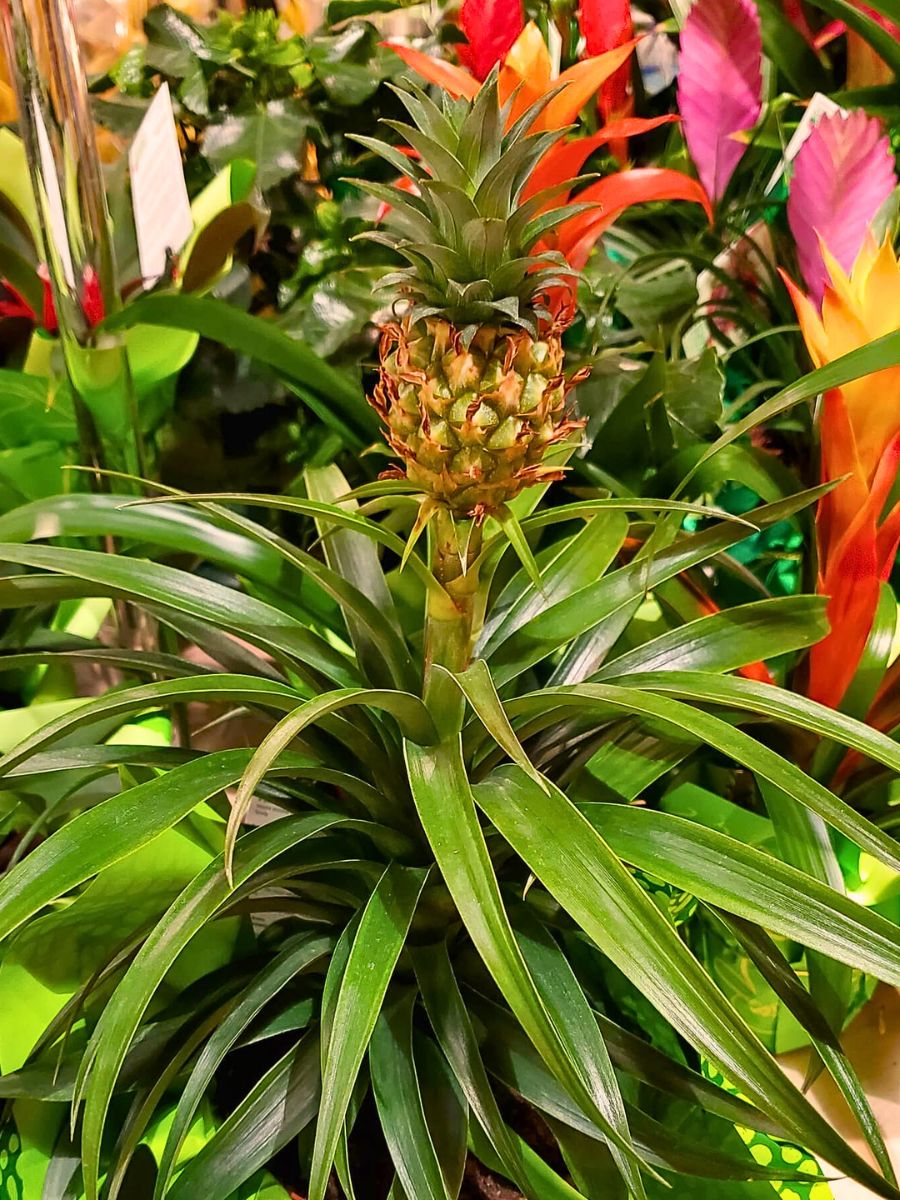
Pineapples love warm, sunny conditions. Keep it at warm room temperature, ideally between 22 and 28 degrees Celsius. Since a pineapple requires fast-draining, sandy soil to prevent root rot, a cactus and citrus potting mix with a pH between 4.5 and 6.5 should suit the plant. Alternatively, you can try a cymbidium orchid mix—which often is recommended for terrestrial bromeliads as well as terrestrial orchids—or a mix of one part peat moss, one part coarse builder’s sand, and one part perlite. The use of a terra-cotta pot rather than a plastic pot also will help prevent rot. Their tropical roots make pineapple plants excellent survivors and therefore, they require little maintenance. Pineapple plants provide an average of 3-6 months of flowering pleasure!
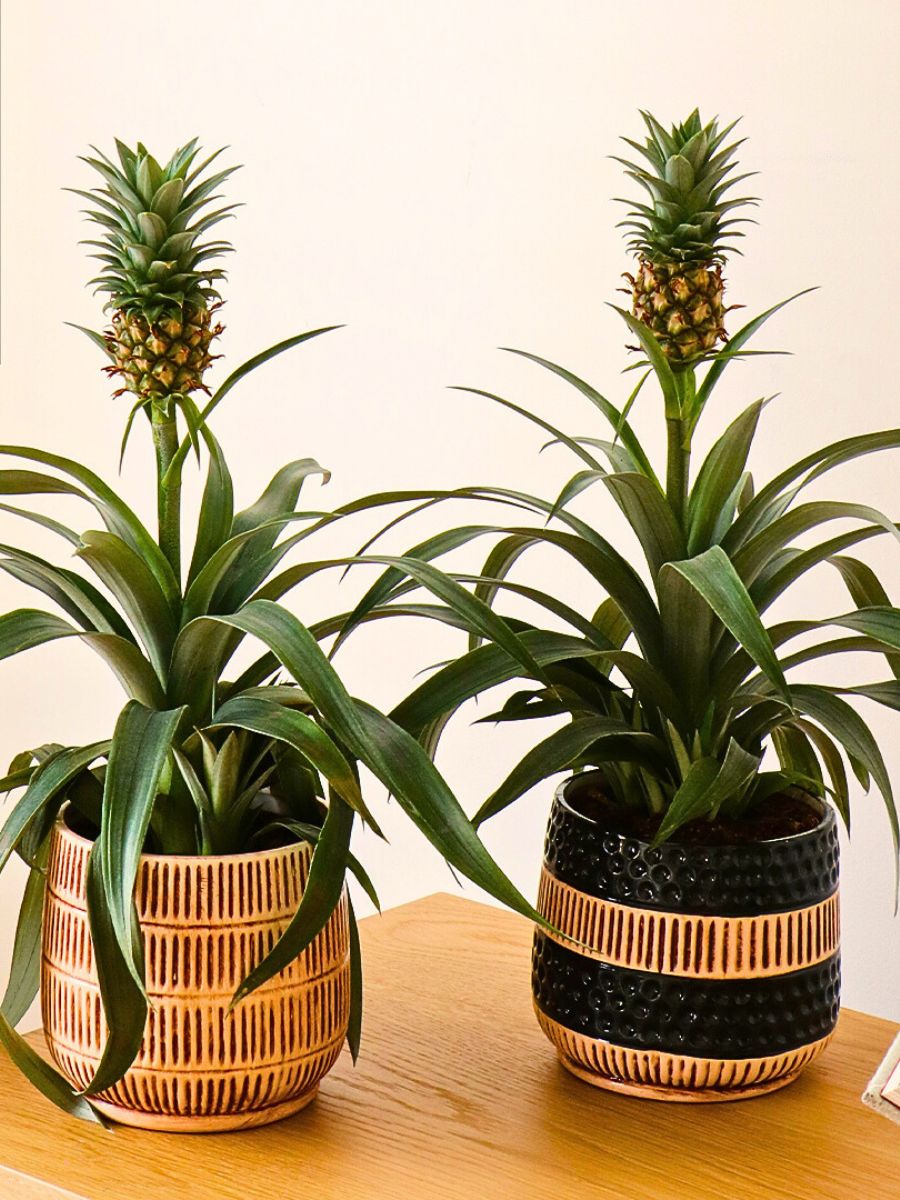
Types of Pineapple Plants
Many different varieties, mostly from the Antilles, were tried for European glasshouse cultivation. The most significant was 'Smooth Cayenne', imported to France in 1820, subsequently re-exported to the UK in 1835, and then from the UK via Hawaii to Australia and Africa. Smooth Cayenne is now the dominant cultivar in world production but there are many more varieties, such as:
- Ananas comosus Nanus - This miniature pineapple grows to about 60 cm with fruits no taller than 7-8 cm.
- Ananas comosus variegatus - A pineapple of a different stripe, this one has green leaves marked with pink up the center.
- Ananas comosus Del Monte Gold - Now one of the most popular commercial cultivars, it might be the name of the fruit you pick up at the supermarket.
- Ananas comosus Abacaxi - Well-known for being one of the most delectable varieties of pineapple, abacaxi has a light, whitish flesh. Since it doesn't transport well, you're unlikely to find it on supermarket shelves—but it's nice for home growing.
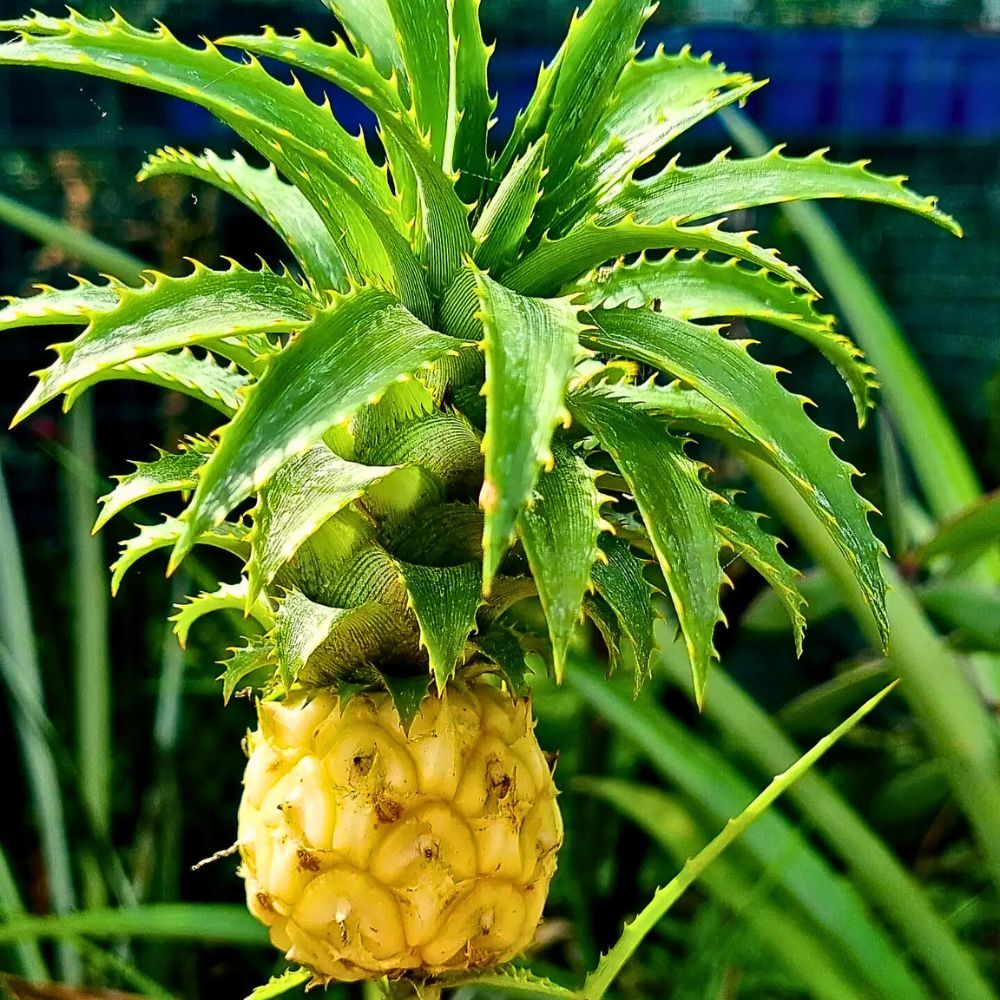
Did You Know?
The pineapple plant also easily produces new offsets next to the mother plant and with a little patience and love a new pineapple plant can be cultivated from these. Did you know that this unique 'anti-snoring' pineapple plant can ensure a good night's sleep? Pineapple plants, unlike most other plants, produce oxygen during the night. Clean air in the bedroom contributes to a deeper sleep and reduces snoring symptoms. Sleep tight!
Feature image by @plantparentkaye, header image by Cesar Augusto Ramirez Vallejo.

